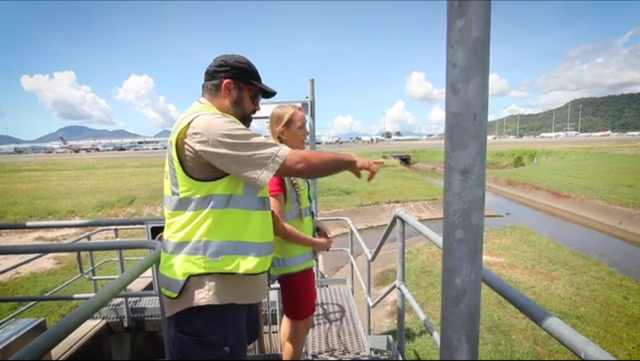This article is part of a series of selected ESG case studies submitted by participants in the 2017 GRESB Infrastructure Assessment.
Purpose of the project
The goals of the North Queensland Airport (NQA) case study were to build a better internal capacity and understanding of future risks to both airport assets and airport operations including the climate change parameters of most concern at each Airport. Risks were prioritised into a risk register that can then be used by NQA to inform future planning and management decisions including asset management, infrastructure planning and operations. At the same time, the project provided a better understanding of the utility of some of the relevant CoastAdapt contents in practical application and key advice documents from CoastAdapt were used as part of project reporting.
Approach
In consultation with the NQA client lead, the activities involved:
1) Setting the context in terms of:
- Setting the timeframe for the study
- Identification of climate change parameters to be examined
- Understanding of future trends in climate
- Identification of Airports’ assets and operations that could be affected
2) Preparing and delivering a workshop with NQA staff for the first pass risk screening for Cairns Airport in accordance with C-CADS guidance from CoastAdapt
3) Preparing and delivering a workshop with NQA staff for the first pass risk screening for Mackay Airport
4) Carrying out the second pass risk assessment process for both Airports in accordance with C-CADS guidance from CoastAdapt
5) Preparing notes and templates using the outputs of the workshop
Implementation
Currently completing – including learnings from case study in plans and procedures
Results
The test case was found to be very successful in the context of providing NQA with a comprehensive risk register that can be used in the context of future planning (forms part of the Environmental Management Plan for both airports). The work was done cost effectively and relatively quickly and had enthusiastic engagement from experts within the NQA organisation who participated in the workshop process. Familiarity with the CoastAdapt suite of tools will allow NQA to further interrogate the information that is available with a much better understanding of the process and outputs (C-CADS). NQA has a better awareness and understanding of its current and future risk profile with respect to climate and extreme weather events. The work is proposed to be presented to senior management and will inform future planning and environmental strategy documents for the Airports. Due to the amount of uncertainty around climate change, the risks will need to be continually re-assessed when more information becomes available.
This case study was submitted by J.P. Morgan Investment Management, on behalf of North Queensland Airports.



